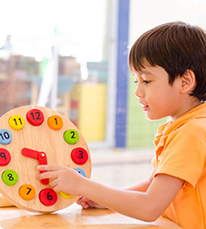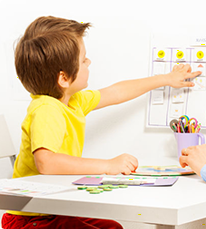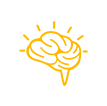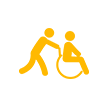 Topics
Topics
What is Applied Behavior Analysis (ABA)?
Applied Behavior Analysis (ABA) is the practice of applying the psychological principles of learning theory in a systematic way to alter behavior in humans or animals. The practice is used extensively in education, healthcare, animal training, and business management. It is particularly prominent in the treatment of Autism Spectrum Disorder (ASD), for which it is one of the only scientifically valid therapies available.
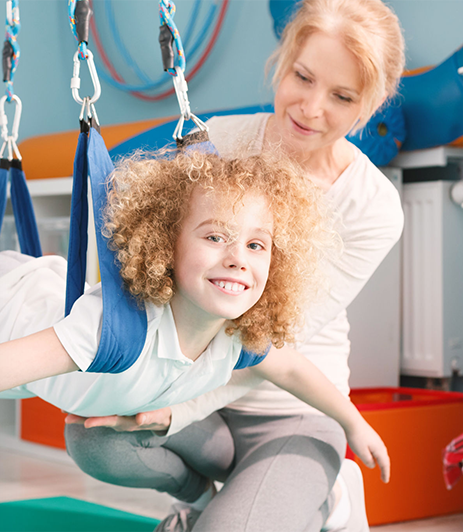
How It Works
ABA takes a research approach to therapy based on proven theories of learning and behavior. Therapists who use ABA understand how human behaviors are learned and how they can be changed over time. The therapist evaluates a client’s behavior and develops treatment plans to help improve the communication and behavior skills necessary for success in their personal and professional lives. ABA therapists can also provide training to parents and teachers. For the greatest results, ABA requires heavy monitoring and continuous evaluation. Therapists and other health professionals work within settings such as schools, homes, and community centers to evaluate and modify treatment as it progresses.
What to Expect
When working with an ABA therapist, you will:
Determine which behaviors require change
1
Set goals and expected outcomes
2
Establish ways to measure changes and improvements
3
Evaluate where you are now
4
Learn new skills and/or learn how to avoid negative behaviors
5
Regularly review your progress
6
Decide whether or not further behavior modification is necessary
7
The length of time spent in ABA depends on the severity of the problem and individual rate of improvement.
How does ABA therapy work?
Applied Behavior Analysis involves many techniques for understanding and changing behavior. ABA is a flexible treatment:
Can be adapted to meet the needs of each unique person
Provided in many different locations – at home, at school, and in the community
Teaches skills that are useful in everyday life
Can involve one-to-one teaching or group instruction
Positive Reinforcement
Positive reinforcement is one of the main strategies
used in ABA.
When a behavior is followed by something that is valued (a reward), a person is more likely to repeat that behavior. Over time, this encourages positive behavior change.
First, the therapist identifies a goal behavior. Each time the person uses the behavior or skill successfully, they get a reward. The reward is meaningful to the individual –examples include praise, a toy or book, watching a video, access to playground or other location, and more. Positive rewards encourage the person to continue using the skill. Over time this leads to meaningful behavior change.
Antecedent, Behavior, Consequence
Understanding antecedents (what happens before a behavior occurs) and consequences (what happens after the behavior) is another important part of any ABA program.
The following three steps – the “A-B-Cs” – help us teach and understand behavior:
An antecedent:
tthis is what occurs right before the target behavior. It can be verbal, such as a command or request. It can also be physical, such a toy or object, or a light, sound, or something else in the environment. An antecedent may come from the environment, from another person, or be internal (such as a thought or feeling).
A
A resulting behavior:
this is the person’s response or lack of response to the antecedent. It can be an action, a verbal response, or something else.
B
A consequence:
this is what comes directly after the behavior. It can include positive reinforcement of the desired behavior, or no reaction for incorrect/ inappropriate responses.
C
Looking at A-B-Cs helps us understand:

1
Why a behavior may be happening
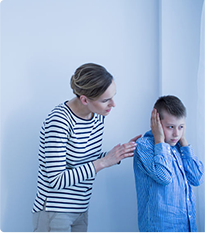
2
How different consequences could affect whether the behavior is likely to happen again
Example:

Antecedent:
The teacher says “It’s time to clean up your toys” at the end of the day.
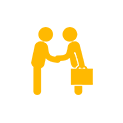
Behavior:
The student yells “no!”
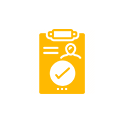
Consequence:
The teacher removes the toys and says “Okay, toys are all done.”
How could ABA help the student learn a more appropriate behavior in this situation?
Antecedent:
The teacher says “time to clean up” at the end of the day.
Behavior:
The student is reminded to ask, “Can I have 5 more minutes?”
Consequence:
The teacher says, “Of course you can have 5 more minutes!”
With continued practice, the student will be able to replace the inappropriate behavior with one that is more helpful. This is an easier way for the student to get what she needs!
What Does an ABA Program Involve?
Good ABA programs for autism are not “one size fits all.” ABA should not be viewed as a canned set of drills. Rather, each program is written to meet the needs of the individual learner.
The goal of any ABA program is to help each person work on skills that will help them become more independent and successful in the short term as well as in the future.
Planning and Ongoing Assessment
A qualified and trained behavior analyst (BCBA) designs and directly oversees the program. They customize the ABA program to each learner's skills, needs, interests, preferences and family situation.
The BCBA will start by doing a detailed assessment of each person’s skills and preferences. They will use this to write specific treatment goals. Family goals and preferences may be included, too.
Treatment goals are written based on the age and ability level of the person with ASD. Goals can include many different skill areas, such as:


Communication and language

Social skills
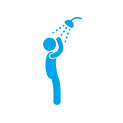
Self-care (such as showering and toileting)
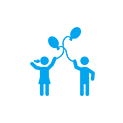
Play and leisure

Play and leisure

Learning and academic skills
The instruction plan breaks down each of these skills into small, concrete steps. The therapist teaches each step one by one, from simple (e.g. imitating single sounds) to more complex (e.g. carrying on a conversation).
The BCBA and therapists measure progress by collecting data in each therapy session. Data helps them to monitor the person’s progress toward goals on an ongoing basis.
The behavior analyst regularly meets with family members and program staff to review information about progress. They can then plan ahead and adjust teaching plans and goals as needed.
ABA Techniques and Philosophy
The instructor uses a variety of ABA procedures. Some are directed by the instructor and others are directed by the person with autism.Parents, family members and caregivers receive training so they can support learning and skill practice throughout the day.
The person with autism will have many opportunities to learn and practice skills each day. This can happen in both planned and naturally occurring situations. For instance, someone learning to greet others by saying "hello" may get the chance to practice this skill in the classroom with their teacher (planned) and on the playground at recess (naturally occurring).
The learner receives an abundance of positive reinforcement for demonstrating useful skills and socially appropriate behaviors. The emphasis is on positive social interactions and enjoyable learning.
The learner receives no reinforcement for behaviors that pose harm or prevent learning.
ABA is effective for people of all ages. It can be used from early childhood through adulthood!
What Can Children Learn Through ABA?
Most of the time, ABA is intended to "extinguish" undesirable behaviors and teach desired behaviors and skills. For example, ABA may be used to reduce outbursts and tantrums or to teach a child to sit quietly, use words to make requests, or wait their turn in the playground. ABA can also be used to teach simple and complex skills. For example, ABA can be used to reward a child for brushing his teeth correctly, or for sharing a toy with a friend.
While classic ABA can be used in a "natural" setting (a playground, for example), it is not intended to build emotional or social skills. So, for example, while ABA might teach a child to shake hands or greet another person with a handshake, it won't help that child to feel an emotional connection with another person. It takes an extraordinary therapist to use ABA to teach academic content, imaginative or symbolic thinking, or empathy; as a result, those skills are usually taught in other ways.
Who provides ABA services?
What is the evidence that ABA works?
ABA is considered an evidence-based best practice treatment by the US Surgeon General and by the American Psychological Association. “Evidence based” means that ABA has passed scientific tests of its usefulness, quality, and effectiveness. ABA therapy includes many different techniques. All of these techniques focus on antecedents (what happens before a behavior occurs) and on consequences (what happens after the behavior).
More than 20 studies have established that intensive and long-term therapy using ABA principles improves outcomes for many but not all children with autism. “Intensive” and “long term” refer to .programs that provide 25 to 40 hours a week of therapy for 1 to 3 years. These studies show gains in intellectual functioning, language development, daily living skills and social functioning. Studies with adults, though fewer in number, show similar benefits.
20+
Studies that have shown positive progress with ABA
80%
Chance a child will move into general curriculum classes after 2–3 years of intensive ABA therapy*
6
Decades of proven results from ABA therapy
Is ABA covered by insurance?
Sometimes. Many types of private health insurance are required to cover ABA services. This depends on what kind of insurance you have,and what state you live in.
All Medicaid plans must cover treatments that are medically necessary for children under the age of 21. If a doctor prescribes ABA and says it is medically necessary for your child, Medicaid must cover the cost.
Please see our insurance resources for more information about insurance and coverage for autism services.
You can also contact the Autism Response Team If you have difficulty obtaining coverage, or need additional help.
Is it right for my child?
Only you can decide which therapy is right for your kiddo, and we recommend discussing the options with the pediatrician. ABA’s scope is broad, so to arm you with the proper knowledge and direction for that conversation, here are some areas where your child may benefit from it.
In-HomeABA Therapy
ABA Therapy is provided in the child’s own environment. It facilitates active family participation
Community-based ABA Therapy
ABA Therapy is provided in the child’s daycare. It enables generalization of skills and peer interaction.
ABA in a Group Setting
Gives your child tools to improve social skills, emotional intelligence and self-confidence..
Center-based ABA Therapy
ABA Therapy is provided in a structured environment. It facilitates planned socialization with peers.
